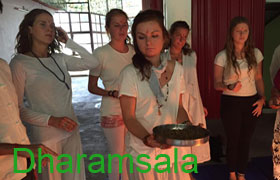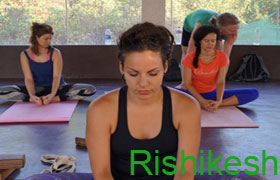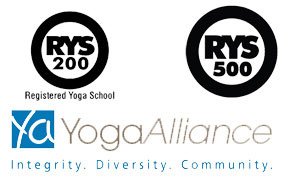Ujjayi Pranayama: Practice and its importance
You may try out the following exercises in order to practice Ujjayi pranayama.
1.Begin with breathing through the nose and emphasize on the breath there. Flare your nostrils. The breath may sound very airy. You may be subjected to common tendency of either gasping the air in through the nose, or not realising that this sound is from the nose but is not moving through the throat and chest due to lack of attention. This indicates an unconscious state that lacks awareness and is very common in the process of inhalation.
2.Clinch the teeth and try using the ujjayi breath. Keep your jaw locked so that the sound hisses in the mouth inwardly and bounces away through the upper palate. During the practice of any asana, any tension caused due to the asana is reflected as similar tension in the jaw and face. This denotes the hyper tensed state or the state of awareness that is sneaky and rigid and is commonly noticed in the case of exhalation.
3.Slide down your lower jaw, creating a significant gap between the lower and upper teeth and produce ujjayi sound again. As your face stays relaxed in this way, the sound would become gentler, milder, less harsh and more resonant. Keep your jaw dropped and face relaxed while you focus both on your inhalation and exhalation. You will feel a little as though you are breathing through your ears. As the inner ear squeezes, the Carven of the skull reverberates the sound. Eventually your mind tends to become empty.
Dropping your lower jaw and sensitively increasing the ujjayi sound has a direct relationship with stretching the spine and eventually allowing the free movement of the diaphragm. So the proper application of the ujjayi restriction at the starting point of the throat indistinctly stimulates the jalandhara bandha, imposing the uddiyana bandha on the movement of the diaphragm. The uddiyana bandha in turn promotes the mula bandha. The flow process of the ujjayi pranayama equally promotes all three bandhas.
The sound of the breath resonates in three main areas – the nostrils, the palates and the throat. The sound resonates only when it is behind the throat. It then begins to resonate in the chest cavity, imparting a full range of movement of the diaphragm.
The sound of the breath is generally louder and longer during the process of exhalation and softer and briefer during the process of inhalation. Try to attain a state of balance between the step one constituting the lack of awareness and step two constituting fixed awareness. Typically the inhalation sound should be boosted and the exhalation sound should be more casual. With consistent ujjayi sound, the breathing span increasing evenly throughout the practice. This will improve your awareness about your body needs and thus injuries will be less likely to occur. The facial deformations combined with the lack of attention form the major cause of injuries. If your breath is both gentle and steady, it would be almost impossible to push harder. Do not force yourself if your breath secondary to getting into a desired posture. The breathing becomes gentler naturally if the face remains relaxed. Experienced yoga practitioners in fact have really quite breathing.
It is common and ofcourse useful for the beginners to emphasize on the exhalation process and ujjayi exhalation sound. They may extend and exhale for a longer length of time. This emphasize on out-breath can be useful for experienced students too in case they are learning a new or unfamiliar asana. By nature inhalation tends to be shorter while exhalation being longer particularly with respect few asanas involving back arching moves and twists like upward dog posture. Care should be taken to maintain the beginning of the inhalation process gentle and subtle rather than being abruptly while performing postures imposing restriction over the diaphragm. Lack of breath often causes quickly drawn inhalation due to panic, which further aggravates the tension. You need to relax to the extent possible in such situation and gradually the body and the breath will sync into harmony.
One easy way to help you to extend the inhalation period in any asana is to count the breath. For instance, you may inhale for a count of five and then exhale for the same count. But this process might become laborious at some point in few cases, particularly if continued for a whole sequence. It may also alleviate you from the natural tendency of the breath and may pose too much of physical strain on you and thus may become potentially injurious too. Extending the period of inhalation will result in the promotion of the fiery element of your practice and thus will result in production of more sweat and elimination of toxins as a part of the exhalation. While the inhalation brings in the tension or energy into the body, the exhalation release it out.
One should make an account of the fact that all the air that we breathe in is not prana strictly speaking. The inhalation involves bringing in air as well as prana into the body. Prana constitutes only the vital life imparting aspects of air that we draw in but not the whole thing. The air that we inhale also constitutes toxins and pollution too to some extent. The exhalation pushes out the toxins and prana as well to some extent thus resulting in depletion of energy. Through thorough practice, the breathing process gets refined and the body eventually learns to take only that is nourishing to it and rejects all that seems to be harmful to it. Thus the practice of pranayama does not necessarily result in improvement in energy, but it enhances the awareness of prana which is already existent and thus deals with accessing your full potential which is otherwise not possible.
In fact strength resembles inhalation and takes longer time to develop compared to flexibility that resembles exhalation. Since inhalation and exhalation are linked up inextricably, it is impossible to develop one without influencing the other. By nature men are stronger than being flexible while women are more flexible than being stronger. Exaggeration of these tendencies may result in an imbalance. Thus the practice should be able to practice these divergences. However the natural tendency should be accepted. Hence prefer to maintain the breath gently throughout the practice and allow the breath to dictate the practice. This imparts greater ease into practice and as it involves less heat you will feel less drained. Each and every breath, posture and sequence possesses its own ebb and flow. It is a good and healthy approach not to resist that flow. Thus for best results one should surrender control to the breath. However letting the breath to become completely unconscious and passive is also not desirable.




